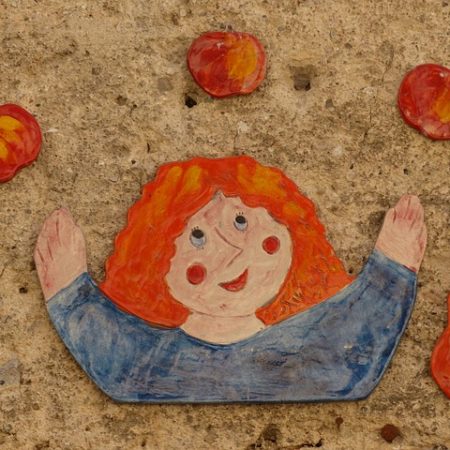
Rehearse the Future with Intentional Daydreaming
“ Where are you?! Come down from the clouds!” I still remember, as if it was yesterday, the voice of my teacher scolding me when I was a kid and in the middle of the class I let my mind wander.
Happily, times have changed, and despite the fact that many of us were taught that daydreaming was a waste of time and in some way “bad and distractive”, nowadays, mind wandering is proven to be an important source of ideas, energy, creativity, and motivation.
I personally always love to encourage my clients to adopt some sort of dreaming dynamic to the workplace, especially in brainstorming meetings. From my point of view, when imagination isn’t fostered, we lose a very valuable transformative energy. If we look at this concept in the context of the business world, dreaming is, in fact, little more than another way of developing new forms of planning techniques.
I want to pinpoint here that we need to keep in mind that it’s very important to distinguish between unintentional mind-wandering and purposeful or intentional daydreaming. Studying the difference between the two is gaining attention as researchers discover people frequently report zoning out on purpose. The findings were published in Psychological Science, a journal of the Association for psychological Science, in March 2016.
How your Work can benefit from your Daydreams
Mind wandering seems to be very useful for planning and creative thought. If you don’t daydream regularly, I suggest a very easy and powerful exercise that will help you to create the habit.
- For a period of two consecutive weeks, set aside, and tag it in your calendar, some time every day to just daydream and see where your mind goes.
- Don’t try to control your thoughts, literally let your mind wonder freely.
- At the end of each “session” write down your experience paying special attention to your degree of visualization or simulation.
- After the two-week period, review your notes while consciously revisiting your behavior and performance during those days. This is the moment to discover if that “simulation of the events or visualization” was translated in some way to your regular activities.
- Compare and observe if you have had more lightbulb moments or if you have been more creative solving problems to put just two examples of daydreaming benefits.
- By the way, if you have difficulties letting your mind go, try a little trick. Do any mundane, boring or repetitive task, something that you don’t like or even hate to do. In my case, folding laundry always works. For others, walking, bathing, being stuck in a traffic jam, or simply looking through the window might be a good start to daydream. Find your way…
“When your mind is able to wander, it is accessing memories, emotions, and random bits of stored knowledge”, says Amy Fries, author of Daydreams at Work: Wake Up Your Creative Powers. “Daydreaming is how we access our big-picture state of mind”, she states.
Daydreaming Provides Creative Breakthroughs
Composers, novelists, scientists, filmmakers and many others – including you probably – have all reported developing great new ideas while daydreaming. Some of the most important discoveries in history are a result of a creative and visionary dreamer.
In recent years, there has been an enormous increase in the number of studies examining why and how our mind loves to travel without GPS. “The general assumption has been that people’s experiences of mind wandering exclusively reflect their attention unintentionally drifting away from a task. Based on our everyday experiences, however, it seems that people frequently intentionally mind-wander ”, explains researcher Paul Seli, from the department of psychology at Harvard University.
Below you can observe a table that helps conceptualize these different types of thought and gives us a clear idea of a daydreaming process. This table was published in the article Mind-wandering as spontaneous thought: A dynamic framework- Nature Reviews – Neuroscience

These “task-induced deactivations” generate a mental state that activates different areas of the brain than those stimulated when a person is focused on a goal or task. This daydreaming network is known as the default network.
Daydreaming is, in a way, another form of relaxation that allows us to slip into a subliminal state of being, giving us all the advantages of sleeping, yet we are awake. Our brain cherishes these moments of altered consciousness where we tackle interpersonal wishes and plan for future fulfillment. The core of daydreaming is sensory reality dissociation, where we temporarily suspend ourselves from reality. In other words, we have all been designed with an internal “off” switch. Despite the endless benefits of intentional daydreaming, I could never emphasize enough that unintentional daydreaming might be counterproductive in some activities, like driving, or in some professions that require full attention. And of course, also for study and learning purposes. Never forget that either!
Daydreaming Stimulates the Brain
The brain is never truly at rest. Neuroimaging studies consistently demonstrate that when we daydream and imagine alternative scenarios, a complex network in the brain fires up. Studies using MRIs show that numerous brain regions become more active than usual, when people are daydreaming. This suggests that our mini-breaks are important to keep our brain stimulated and active.
“When you daydream, you may not be achieving your immediate goal – say reading a book or paying attention in class – but your mind may be taking that time to address more important questions in your life, such as advancing your career or personal relationships,” says Dr. Kalina Christoph an expert exploring the science behind mind wandering of the University of British Columbia in Canada. Her research shows that letting the mind wander stimulates important brain functions crucial for creativity which enhances our ability to mull things over, and enter into an altered state of consciousness.
Daydreaming, a New Tool for Business Planning
Don´t miss the opportunity to take advantage of this gift that we all have. However, remember, not all daydreaming is created equal. Is not about fantasizing seated on the couch. It´s about envisioning the future. I like to say that daydreaming is thinking without censorship and social or corporate corsets. What we want, how we would reach it, and confronting the obstacles from outside to see the whole picture. It’s literally like rehearsing scenarios and outcomes. Envisioning the whole process to accomplish our goals. That dedicated daydreaming, purposeful mind-wandering, is the one that will direct you towards productive creativity. That is the key to go from fantasy to reality, to optimize your daydreams and to motivate you.









